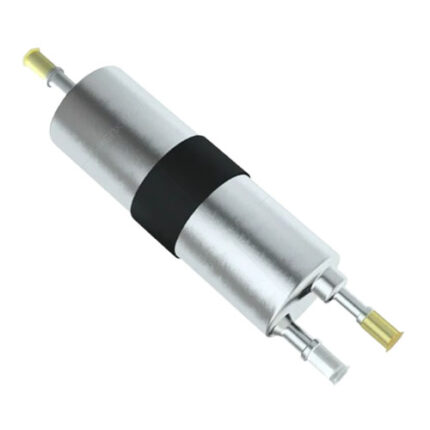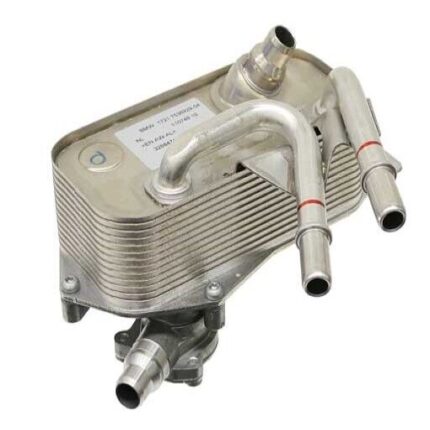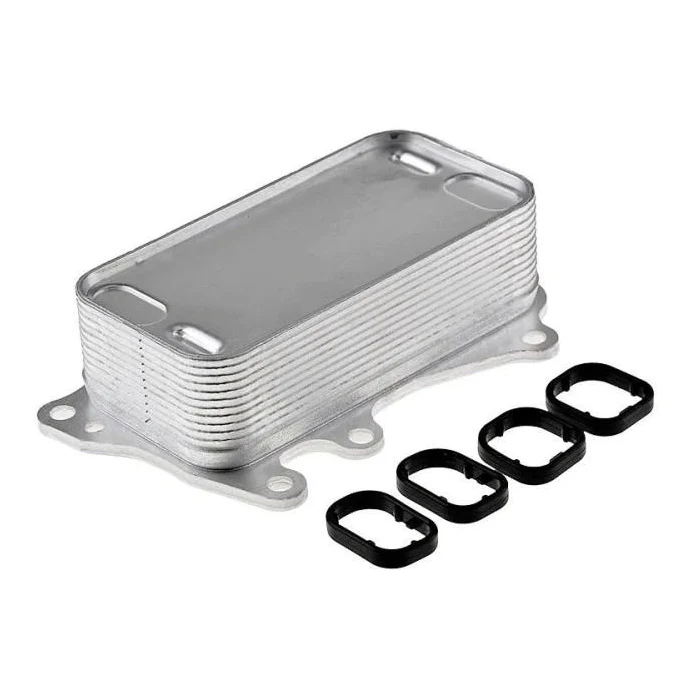-13%
Get BMW F30 328d xDrive N47 2.0L Gearbox Oil Cooler 11428507627 in Kenya
The gearbox, also known as the transmission, is one of the most critical components of a vehicle. It is responsible for transferring power from the engine to the wheels while managing torque and speed. Like any mechanical system, the gearbox generates heat due to friction and the movement of gears. Excessive heat can lead to increased wear, oil degradation, and potential transmission failure. To counteract this, a gearbox oil cooler is used to regulate transmission temperature, ensuring smooth operation and longevity.
2. What is a Gearbox Oil Cooler?
A gearbox oil cooler is a heat exchanger designed to reduce the temperature of the transmission fluid. It prevents overheating by dissipating excess heat generated during gear shifts and continuous driving. The cooler typically works by transferring heat from the transmission fluid to the surrounding air or coolant, depending on the type of system used.
3. How Does a Gearbox Oil Cooler Work?
The cooling system consists of the following key components:
- Transmission Fluid Lines – Carry heated oil from the gearbox to the cooler.
- Heat Exchanger (Radiator or External Cooler) – Extracts heat from the fluid.
- Cooling Medium (Air or Coolant) – Helps dissipate heat from the oil.
- Return Lines – Send the cooled oil back to the gearbox.
Process:
- The hot transmission oil flows from the gearbox through the oil lines.
- The oil passes through a cooling unit (either an air-cooled or liquid-cooled exchanger).
- The heat is transferred from the oil to the cooler medium.
- The cooled oil returns to the gearbox to maintain a stable operating temperature.
4. Types of Gearbox Oil Coolers
A. Air-Cooled Transmission Oil Coolers
- Uses airflow to cool the transmission fluid.
- Typically mounted near the radiator or in a well-ventilated area.
- Found in high-performance and heavy-duty vehicles.
- Ideal for vehicles frequently towing or driving in hot climates.
B. Liquid-Cooled Transmission Oil Coolers
- Uses engine coolant to regulate the temperature of transmission fluid.
- Integrated into the engine cooling system.
- More efficient at maintaining stable temperatures.
- Common in modern automatic transmissions.
C. Remote-Mounted Transmission Coolers
- Installed separately from the radiator to allow additional cooling capacity.
- Used in racing vehicles and heavy-duty trucks that require extra cooling.
5. Benefits of a Gearbox Oil Cooler
A. Prevents Overheating
- Transmission fluid operates optimally between 175-225°F (80-107°C).
- Exceeding this range causes fluid breakdown, leading to gear wear and slippage.
- A cooler ensures the oil remains within a safe temperature range.
B. Extends Transmission Lifespan
- Overheating accelerates clutch wear, seal damage, and gear failure.
- Regulating temperature prevents these issues, extending gearbox longevity.
C. Improves Gearbox Efficiency
- Cooler transmission fluid maintains optimal viscosity for smooth lubrication.
- Reduces internal friction, improving fuel efficiency and performance.
D. Ideal for Heavy-Duty Applications
- Vehicles towing trailers, carrying heavy loads, or driving in extreme conditions benefit significantly from an oil cooler.
- Racing cars and high-performance vehicles also use additional cooling for efficiency.
6. Signs of a Failing Gearbox Oil Cooler
A. Transmission Overheating
- The dashboard warning light may turn on.
- You may notice delayed or hard shifting.
B. Leaking Transmission Fluid
- A damaged cooler can cause leaks, leading to fluid loss.
- Look for red or brown fluid under the vehicle.
C. Gear Slippage
- The transmission may struggle to engage gears.
- Overheated oil loses its lubricating properties, causing slippage.
D. Coolant Contamination
- If the oil cooler leaks internally, coolant may mix with transmission fluid.
- Leads to a milky or foamy appearance in the oil reservoir.
7. Maintenance and Care
A. Regular Inspection
- Check the cooler and transmission fluid lines for leaks or damage.
- Ensure the oil cooler is free from dirt and debris.
B. Transmission Fluid Replacement
- Over time, transmission fluid degrades due to heat and contaminants.
- Follow manufacturer recommendations for oil change intervals.
C. Cleaning the Oil Cooler
- Periodically flush the oil cooler to remove any blockages.
- Use a transmission cooler flush solution to clean built-up residue.
D. Ensure Proper Installation
- A poorly installed cooler may not function efficiently.
- Always use OEM or high-quality aftermarket coolers for best performance.
8. Choosing the Right Gearbox Oil Cooler
When selecting an oil cooler for your vehicle, consider the following:
- Vehicle Type & Usage – Heavy-duty vehicles and performance cars need larger cooling capacity.
- Mounting Space – Ensure there’s enough space for installation.
- Cooling Efficiency – Choose an oil cooler with high heat dissipation.
- Compatibility – Verify that the cooler matches your transmission system.
9. Conclusion
A gearbox oil cooler is essential for preventing overheating, maintaining efficiency, and extending the life of a transmission system. Whether in an automatic or manual vehicle, a well-maintained oil cooler keeps the transmission running smoothly, especially under heavy loads or extreme driving conditions. Regular maintenance, proper fluid levels, and timely inspections ensure that your transmission remains in top shape, avoiding costly repairs in the long run.
Follow us on Facebook for more parts.




Reviews
Clear filtersThere are no reviews yet.